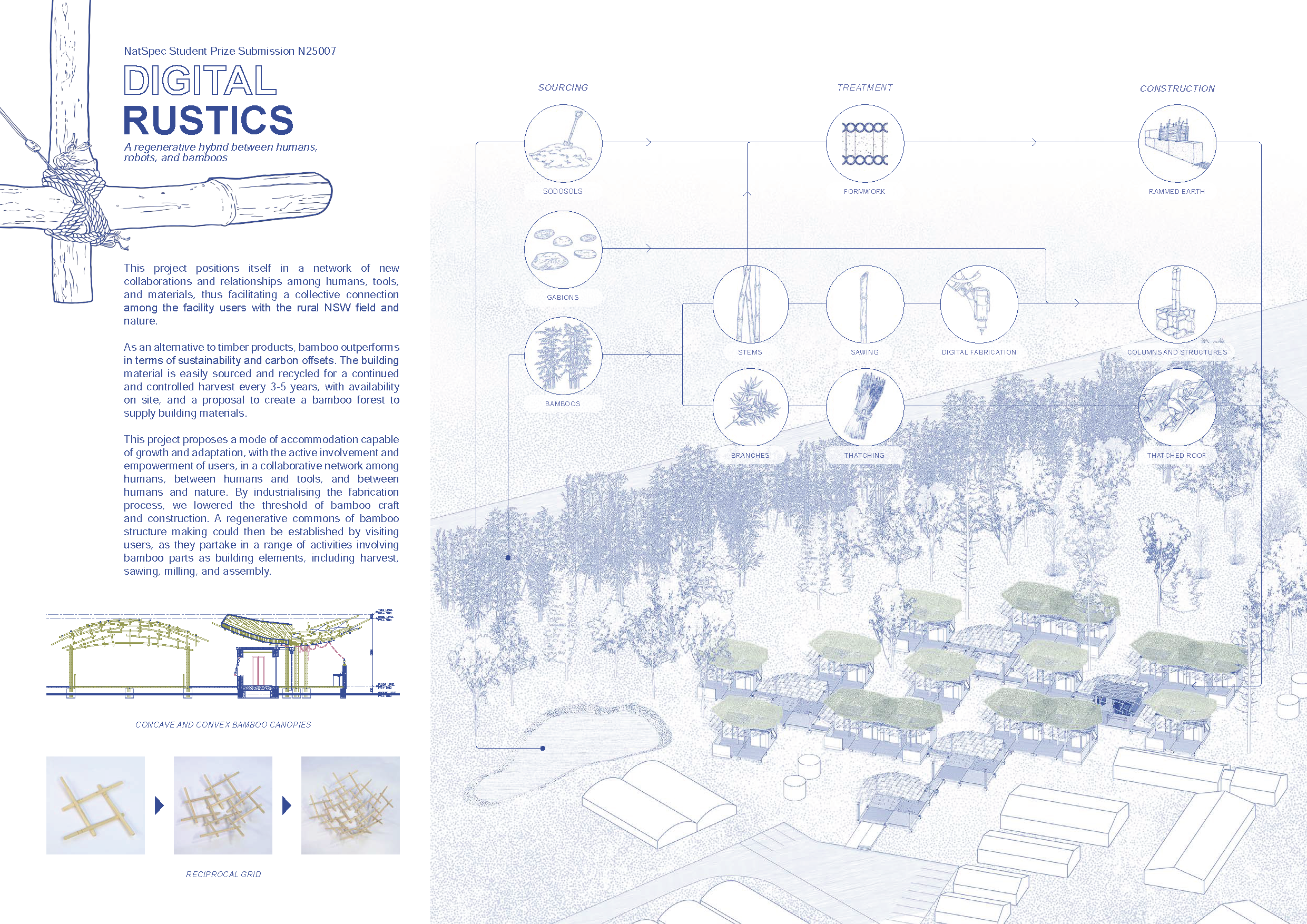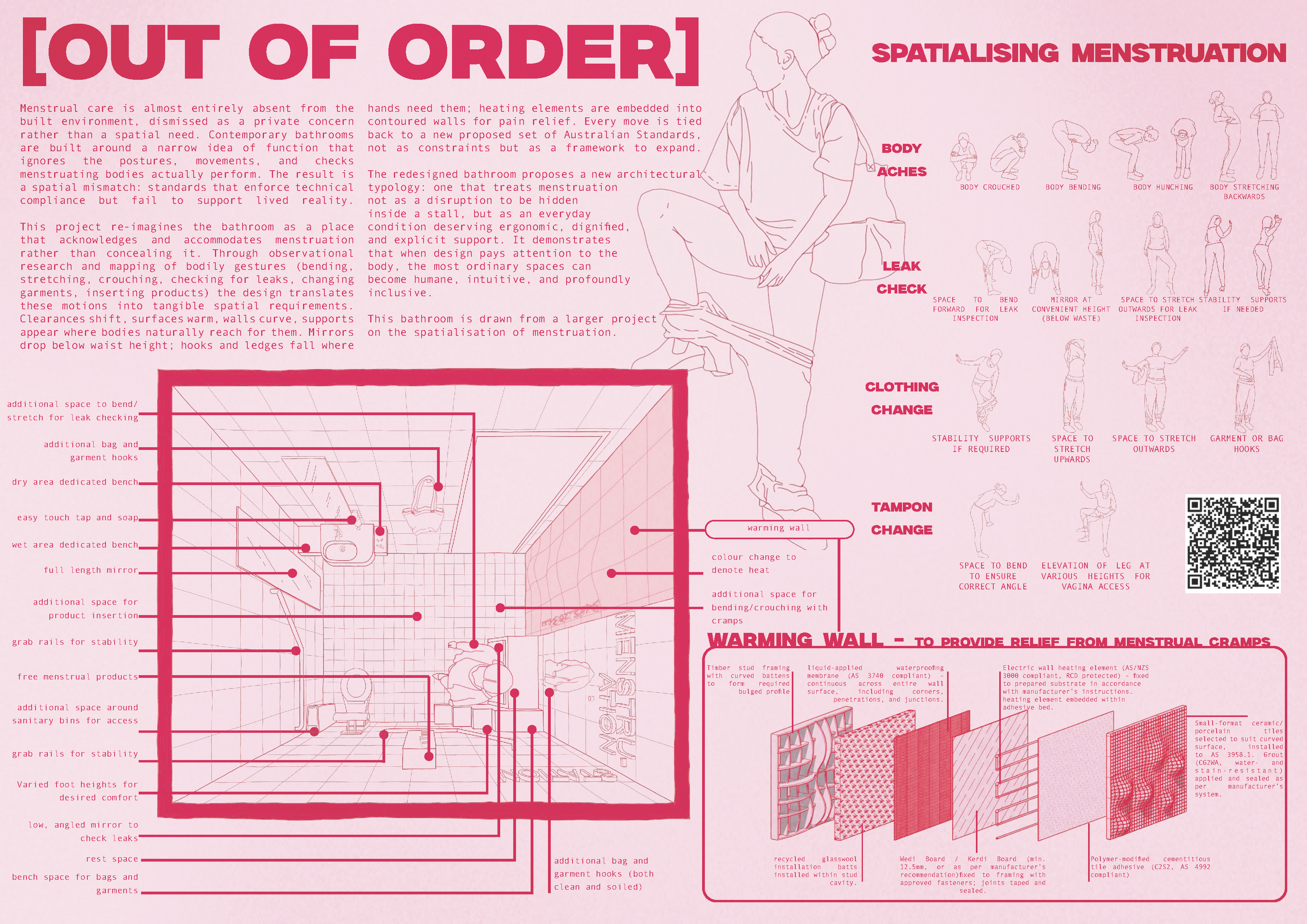The NATSPEC Student Prize is open to students enrolled in Australian universities that provide an Accredited Architecture Masters course, and who meet all the eligibility requirements. Please see the eligibility requirements and other important information about the competition by clicking on the below link. The competition was developed with the assistance of the 2022 Steering Committee.
Up to three awards will be presented
The winner of the NATSPEC Student prize will receive $8,000.
Two commended entries will receive $1,500 each.
2026 NATSPEC Student Prize
Please click on the below button to register for the upcoming 2026 NATSPEC Student Prize. Once registered, a competition identification number will be emailed to you.
Due Date: midnight, Perth time, of Tuesday 1 December 2026
2025 Winners:
Winner
Digital Rustics
Natalie Yeung Cho Yi and O Wen Lam - The University of Sydney
To download the A3 Poster click here
To download the full submission click here
This proposal impressed the jury for its large-scale integrated thinking, from tools to town scale, and the adoption of new techniques for the traditional material bamboo. While the material itself is well known, the combination of structural, digital and broadly sustainable thinking was noted in the context of a small cluster of structures within a specific productive landscape scenario. In particular, the level of construction detailing following the prototyping of the bamboo joints, and subsequent translation into a specification was thorough and compelling. Overall, the judges felt this level of ambition and whole of life cycle thinking and its translation into technical detail and specification set the submission apart.
High Commendation
Spatialising Menstruation
Penelope Cowell – University of Newcastle
To download the A3 Poster click here
To download the full submission click here
The judges commended this submission for its exacting translation of everyday bodily needs and experience to a spatial understanding that was fundamental, and that left no surface or dimension unexamined. An arresting graphic design for the poster immediately brings the viewer into both the reality and scale of the problem, and the level of detailed consideration of the proposed fixes to bathroom design and material assembly. The judges were particularly impressed with the translation of the strong graphic language into its opposite, the carefully documented specification in a proposed Australian Standard for Menstrual Design in Sanitary Facilities.
To view the past winners submissions click here.
2025 Judging Panel
 |
 |
||
 |
 |
Resources
GEN 002 NATSPEC's use of standards
Discusses use of Australian and other standards in specification writing.
GEN 005 Specifications
Discusses the roles, forms and importance of specifications.
GEN 007 Making sure your specifications are up-to-date
Offers updating strategies relating to NATSPEC information.
GEN 009 Hold points and witness points
Defines hold points and witness points and explains their contractual implications in the context of both NATSPEC and AUS-SPEC worksections.
GEN 013 Specifying quality
Communicating the requirements for quality is the main technical function of the specification. This TECHnote outlines how NATSPEC is used to achieve quality in construction projects.
GEN 029 Design and specification guidance text in NATSPEC
Discusses how NATSPEC worksection Templates include guidance in the form of ‘hidden’ Guidance text to help specifiers select the most appropriate worksections and edit Template content to create a project specification.
More Resources:
Architects Accreditation Council of Australia’s ‘National Standard of Competency for Architects 2021

